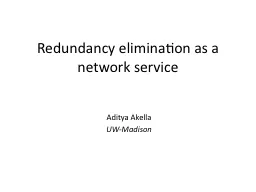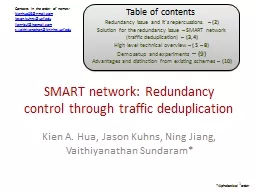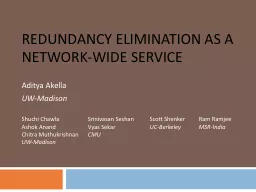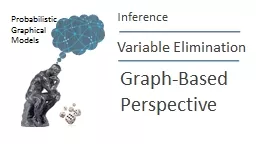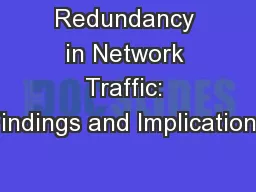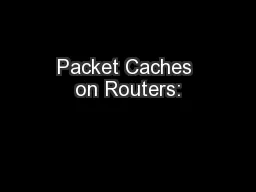PPT-Redundancy elimination as a network service
Author : yoshiko-marsland | Published Date : 2016-06-12
Aditya Akella UWMadison Growing traffic vs network performance Network traffic volumes growing rapidly Annual growth overall 45 enterprise 50 data center 125 mobile
Presentation Embed Code
Download Presentation
Download Presentation The PPT/PDF document "Redundancy elimination as a network serv..." is the property of its rightful owner. Permission is granted to download and print the materials on this website for personal, non-commercial use only, and to display it on your personal computer provided you do not modify the materials and that you retain all copyright notices contained in the materials. By downloading content from our website, you accept the terms of this agreement.
Redundancy elimination as a network service: Transcript
Download Rules Of Document
"Redundancy elimination as a network service"The content belongs to its owner. You may download and print it for personal use, without modification, and keep all copyright notices. By downloading, you agree to these terms.
Related Documents

